Winter fishing
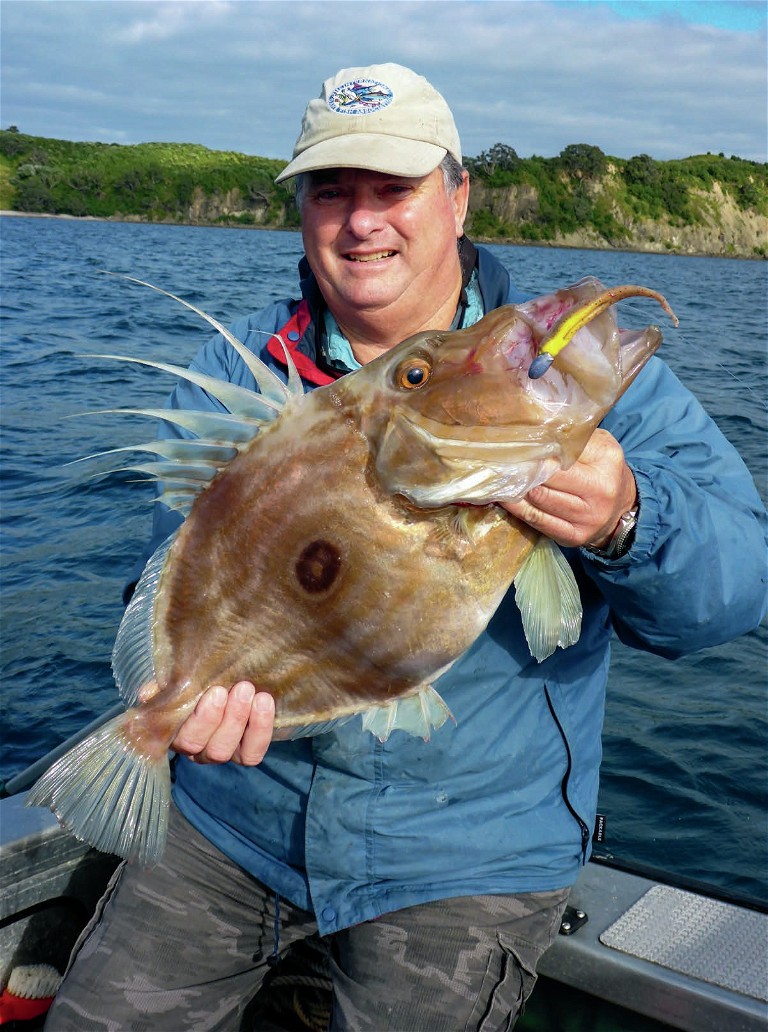
Lure fishing for john dory has become a lot more successful with the increased popularity of soft-baits.
DELICIOUS DORY
One species that Sam Mossman loves to target in inshore waters during the cold months is that fabulous table fish, the john dory.
Although I once pulled one out of 210 metres while hapuku fishing off the Bay of Islands, john dory is a prime winter inshore target.
The good news is that they can be caught (with a few tweaks) by compatible winter techniques used for coastal snapper. And on several occasions, catching a few JDs has saved the day, dinner-wise, when the snapper were not playing ball.
As detailed in the previous issue of NZ Fishing News, I generally use one of two techniques for winter snapper. The first is soft-baiting the shallow foul and inshore channels in 2-30m depths. John dory can be found in the same areas as snapper, and you will sometimes pick up the odd JD as a welcome by-catch without trying. But mostly, to put these delicious fish in the bin regularly, you need to target them.
The thing to remember about JDs is that they are ambush hunters. When I have been snorkelling or fishing from a wharf, I have watched them stalking small fish and shrimps in the shallows. They approach their prey head-on, their narrow, camouflaged bodies propelled by low-key sculling of the secondary dorsal and anal fins as they slowly sneak up on their prey. When in range of its target, the dory shoots out its incredible extending mouth, creating a vacuum and an inrush of water that sweeps the bait into its mouth.
Despite these ‘special weapons and tactics’, only a small number of ‘stalks’ are successful, with maybe one hunt in ten or fifteen resulting in a meal for the JD, at least while I have been watching. Consequently, they can seldom resist if you present them with easy pickings. Even obvious tackle will not put them off.
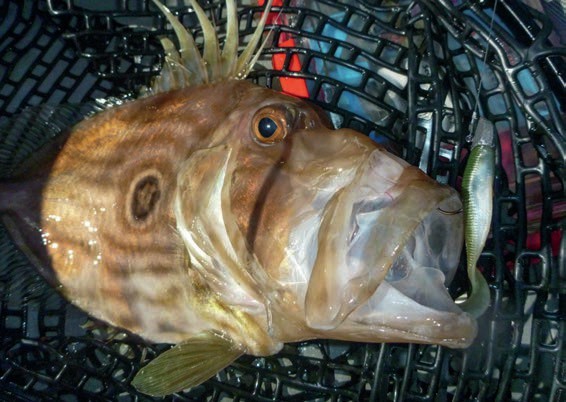
Soft-plastic tails with plenty of movement, such as this grub tail, fish best at low retrieve speeds for dory.
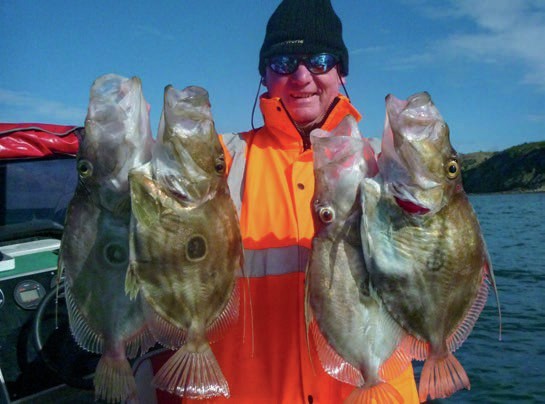
On a winter’s day, targeting a few john dory can save the day if the snapper are hard to find.
Dory on lures
While I have caught JDs on metal jigs and even saltwater flies, the number of lure captures of this species has increased substantially with the advent of soft-plastics. Dory will seldom let anything that looks like dinner go by, and natural-looking (and feeling) softbaits are their cup of tea as far as artificial lures go.
However, I am sure many opportunities for dory on soft-baits are missed purely because the lure is being moved too fast for them to get into a position to ambush it.
The success ratio can be improved by slowing the lure’s retrieve as much as possible, allowing the fish a better chance at it.
For this sort of winter work, I prefer soft-baits that have good action at low speed. Grub tails, for example, are good at this time of year. A particular winter favourite is the Gulp! Crazy Legs, in a ‘natural’ shade.
Slowing the retrieve requires a few alterations in tackle. In shallow water, a light jig head will allow the lure to be fished more slowly, almost hovering above the bottom, without constant snagging. The weight needed to do this will vary with depth and current, so having a variety of jig-head sizes in the box is a good idea.
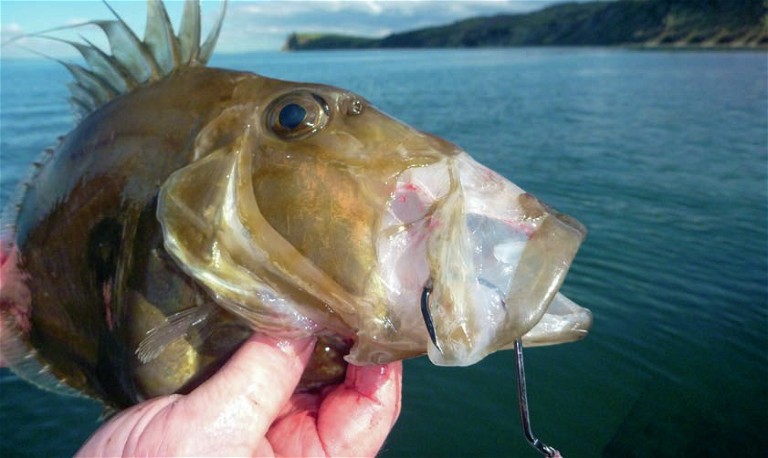
Use a decent-sized hook for live baiting – dory are not shy.
These adjustments in tackle and technique for JDs work well on lethargic winter snapper, too, and as some of the latter are pretty big fish, be prepared for the odd epic battle.
Dory on baits
Another traditional way to fish for winter snapper is to anchor on the up-current edge of an area of foul and run a berley trail back into it, hopefully tempting the snapper to feed and bringing them out to your baits. The berley trail will often attract a swarm of little fish like jack mackerel to your boat, and they, in turn, are an irresistible attraction for john dory, which will hang around the fringes of the bait school, awaiting their chance for a meal.
As I have said, dory are not particularly successful hunters, so giving them an easy meal in the form of a tethered live bait is an efficient method of catching them. Live baits are usually on tap from the school around the berley bomb, and once the baitfish have gathered, it is often just a moment’s work to catch mackerel on a sabiki.
When fishing small live baits for dory, I use a single-hook ledger rig with a decent (6-8oz) sinker to hold the baitfish in position under the boat and prevent it from tangling other lines, the bottom, or wharf pilings (if that is where you are fishing from). Use a big beak hook – size 7/0 or 8/0. Dory are not shy; good point clearance from the bait will give better hook-ups.
The branch line wants to be reasonably short and stiff to prevent the live bait from tangling around the main line. Using a three-way swivel to form the branch line will also help prevent tangles caused by the baitfish.
Although dory are not powerful fish and can easily be landed with light lines and terminal rigs, I like to use at least 10kg gear and a 24kg trace. This is because dory are not the only fish that like small live baits. If something desirable like a kingfish or big snapper is hooked, I want tackle that will give me a chance of coping with them.
Rig the baitfish through the scruff of the neck and be sure that the hook comes in from the correct side so that the offset point rises off the back of the bait when the hook shank is levered down towards the tail, as happens when a JD sucks in the bait head-first. Suitable live baits can be any small fish – dory are not very fussy – with the common and hardy jack mackerel a favourite choice. A baitfish about 100mm long is good, but don’t be afraid to go larger. It is amazing what a dory can fit down its incredible mouth – up to and including legal-sized snapper and trevally.
I like a flexible rod for this work as you can load the tip slightly and leave it set in the rod holder while you enjoy a hot coffee and fish for snapper out the back of the berley trail. Watching the rod tip, you may notice when the bait becomes agitated – a good sign there is a dory or other predator about.
The take is usually a single solid thump on the rod tip, followed by the rod loading down further. Set the hook with a modest strike and work the fish in. Dory’s mouths are constructed of a light membrane, so don’t be too rough (another reason to use a soft-actioned rod). And use a net to land them; sometimes, it is just the spines of the baitfish holding on to the dory, not the hook, and if you try to lift them aboard by the trace, they will come unstuck.
This type of ‘set it and forget it’ fishing allows you to have the best of both snapper and JD fishing at the same time, and as mentioned, if the snapper fishing is slow, sometimes it is the dorys that are the day’s highlights.

Jack mackerel are an ideal live bait for JDs.

Rig the baitfish through the scruff of the neck so that the offset point rises off the back of the bait when the hook shank is levered down towards the tail.
Off the wharf
As well as inshore foul and channels, dory are regular haunters of wharf pilings, hunting for the small fish that use them for shelter and feeding stations. One of the best ‘johnny’ sessions I ever had was off a Far North wharf some years ago. Peering (or should that be piering?) down into the water, I could discern clouds of bait fish, including jack mackerel and sweep, sheltering around the wharf piles and being hunted by the pale, ghostly forms of numerous john dory. I have never seen so many JDs in one place before, and it was not hard to nail a few baitfish with sabikis and lower them down to the waiting dory.
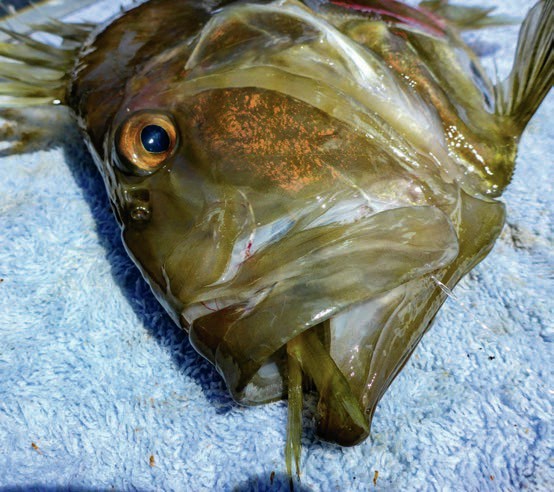
Dory engulf their prey, like this barely visible jack mackerel bait, by shooting forward their incredible extending mouth.
But after three or four JDs were landed, the game changed – the tide dropped, and the current where the baitfish were feeding moved further out into the channel, taking the dory with it. Now it was much harder to catch the bait fish and to present them to the slow-moving, midwaterfeeding dory. Thinking back to my childhood, I remembered catching yelloweye mullet off the Napier Wharf by berleying them in with bread and then ‘jagging’ them with a treble hook. I figured this was a way to get out to the baitfish school, now twenty-odd metres off the wharf, and it also occurred to me that as only one point of the treble would be in the baitfish, the other two points were free to hook a dory.
It worked a treat – cast out the treble, jag a bait, then immediately free-spool it so it would sink, struggling, down to the waiting dory, who, momentarily at least, couldn’t believe their luck. As well as the odd kahawai and kingfish that crashed the party, I ended up with thirteen dorys on the deck and we ate well for the rest of the week. But a catch of JDs like this is exceptional, and two to four of these fish in a session is more common.
On the table
Filleting dory can take a fair bit of deft knife work. First, make sure your knife is extra sharp, before cutting the skin right around the perimeter of the fillet inside the row of protective spikes. Carefully flay the flesh off the bone. Once you have the fillet off, skin it and remove the belly wall. This will leave you with a bone-free fillet that naturally falls into three sections of beautifully firm, glossy white flesh. Some people like to cook JD fillets with the skin on. If doing this, put several slices across the skin to prevent the flesh from curling up in the pan.
As most anglers will know, the eating qualities of john dory are second to none. The flesh is a little denser than most table fish, and it takes a little more time to cook right through. To avoid burning the outside while cooking the inside, cook it for longer at a lower temperature than you would usually use for other fish species. It is hard to find a better table fish, I promise you.